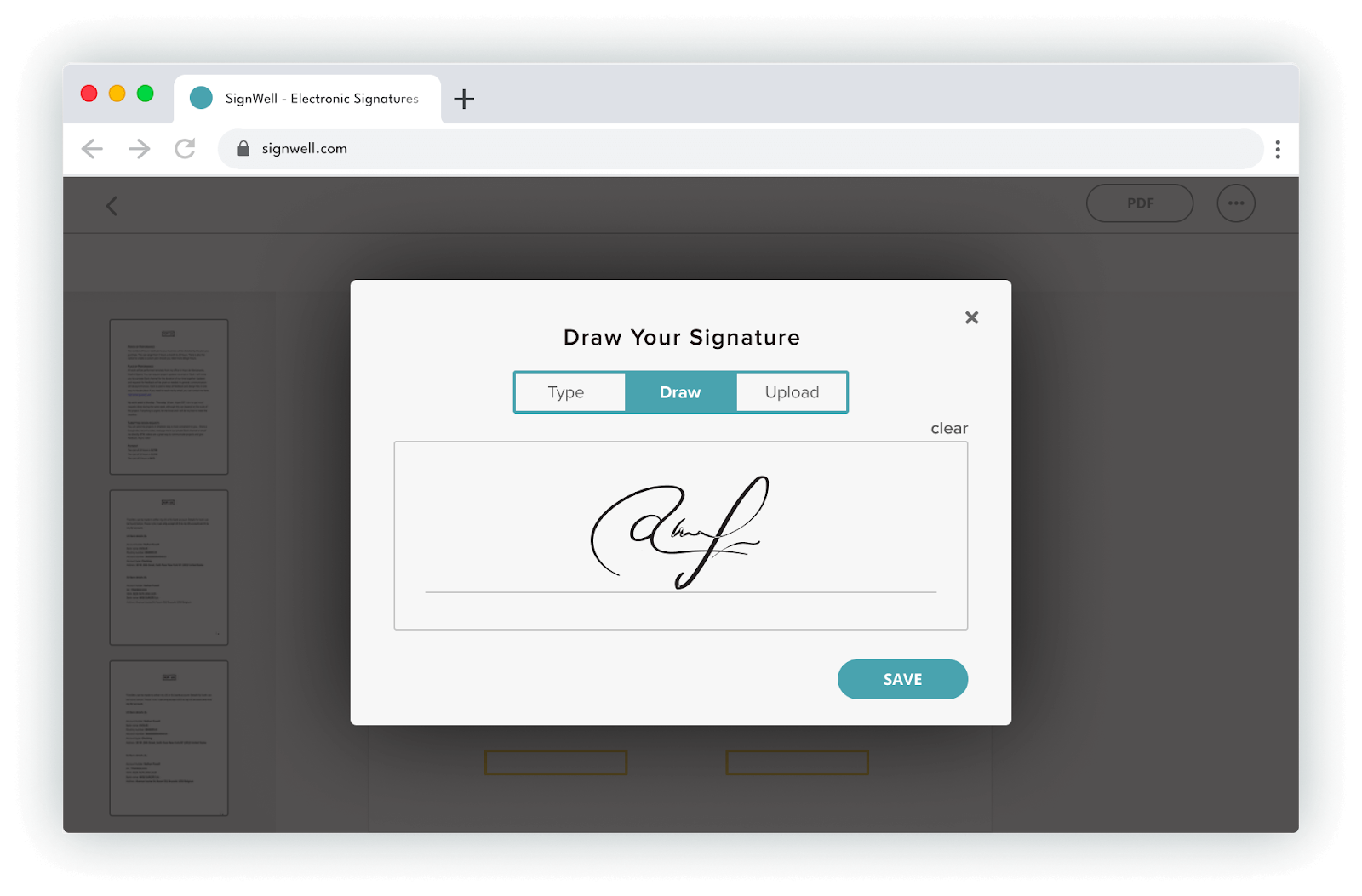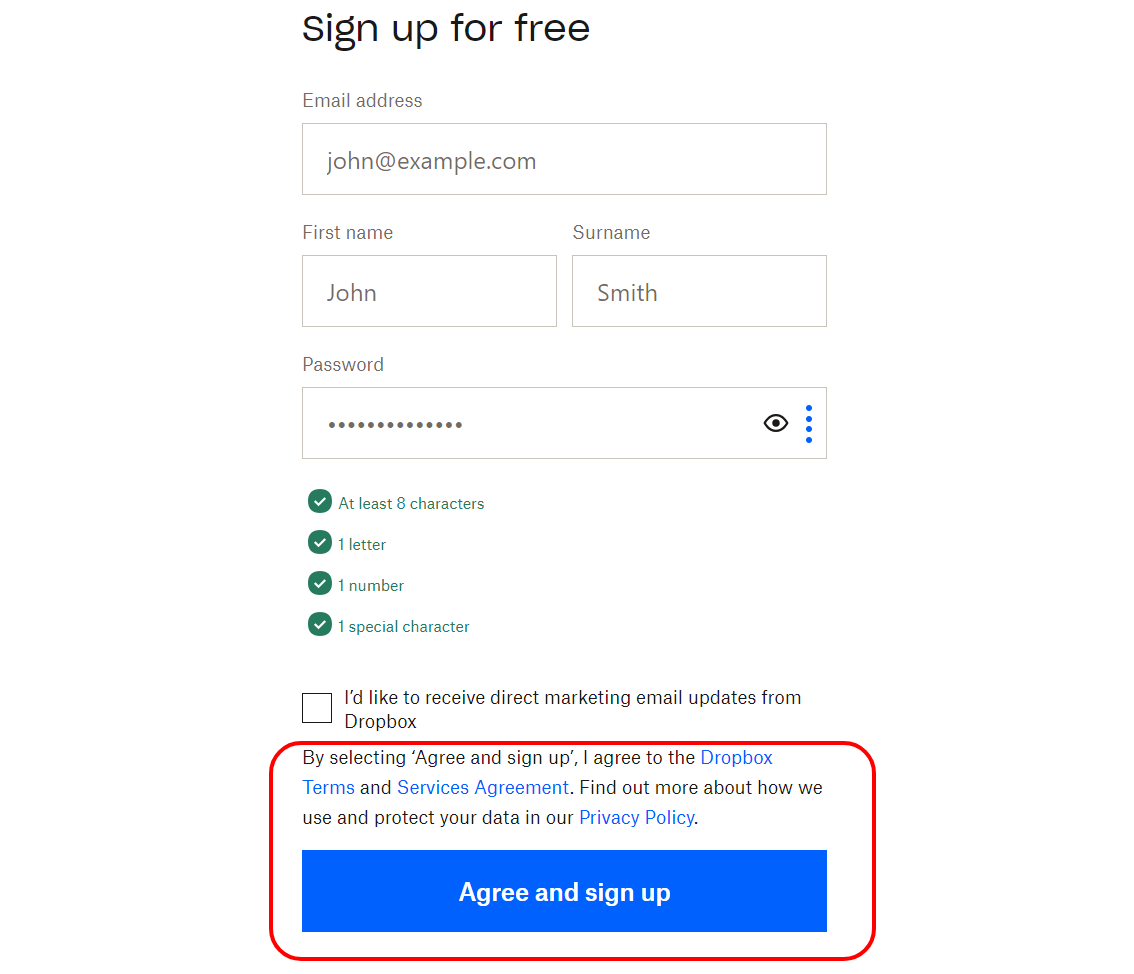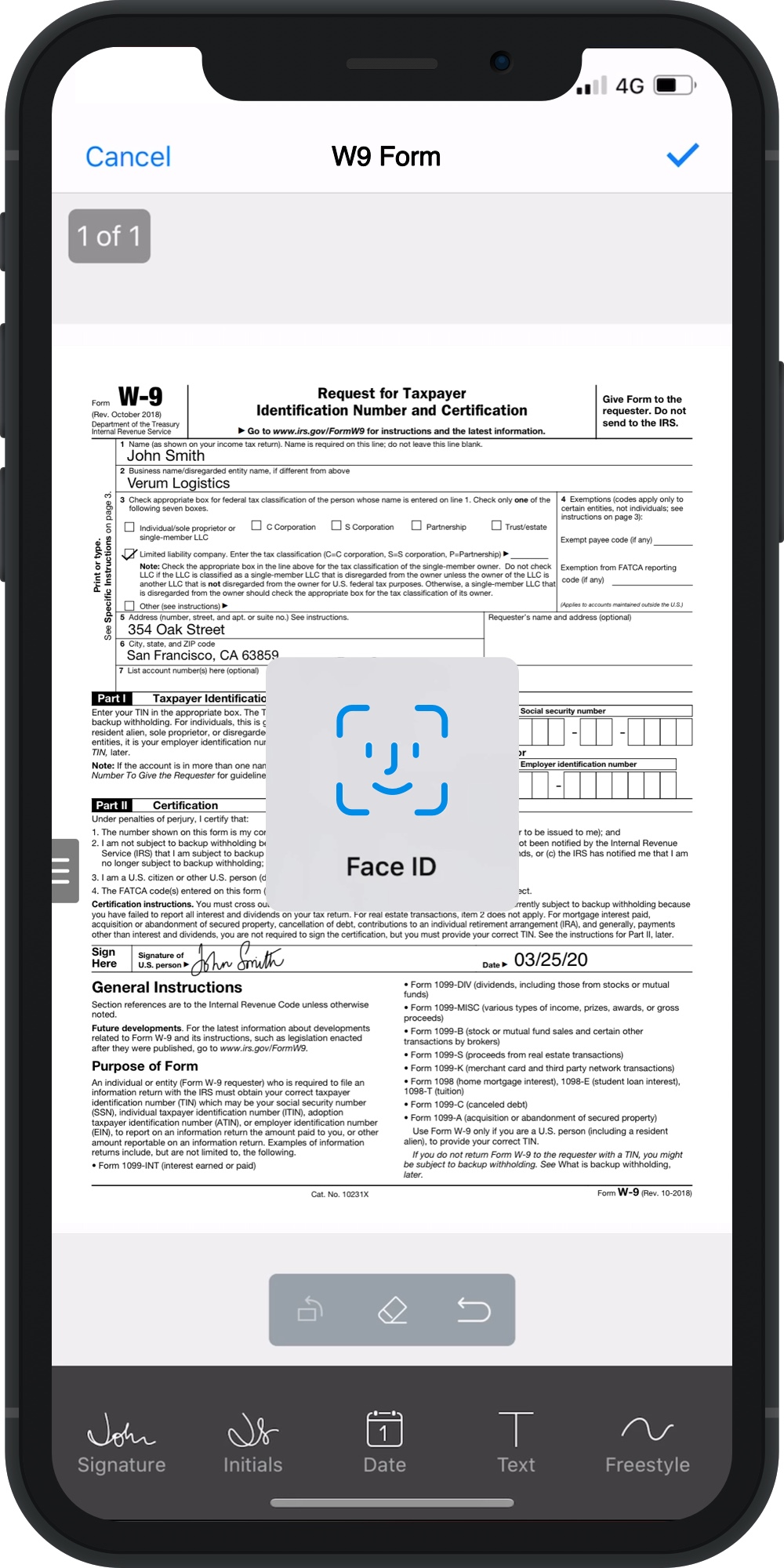Helpful Summary
- Overview: The article explores various types of signatures, including wet, electronic, digital, clickwrap, and biometric signatures, highlighting their best uses and examples.
- Why Trust Us: SignWell has helped over 61,000 customers simplify document signing, ensuring legal compliance and enhanced security.
- Why It Matters: Understanding the types of signatures is crucial for legal compliance, security, efficiency, and global reach in the digital age.
- Action Points: Use SignWell to create and manage your signatures easily. Sign up, upload documents, add your signature, and share securely.
- Further Research: Explore how electronic signatures integrate with your existing workflow and compliance needs.
Curious About the Different Types of Signatures?
Signatures once required the physical presence of both parties, necessitating in-person meetings to finalize agreements. Today, the process is far more convenient. You can sign or request a signature on a document from any device, regardless of location or time zone.
This technological advancement has introduced various types of new signatures in addition to traditional ones. If you want to stay current with modern practices, it’s essential to become familiar with all of them.
At SignWell, we simplify the document signing process for thousands of individuals and businesses. We will guide you through the different types of signatures, provide examples, and explain when it makes sense to use them.
But first…
Why Listen to Us?
We have firsthand experience helping businesses streamline their document signing process with various types of electronic signatures. Our clients, including ConveYour and Ontrack Bookkeeping, have successfully used SignWell to integrate seamless and secure e-signing into their workflows, enhancing efficiency and compliance.
Solving these pain points has led to significant benefits. For instance, businesses report faster transaction times and improved client satisfaction. SignWell’s user-friendly platform and comprehensive security features ensure that your document signing is both simple and reliable.
Why It’s Important To Know the Different Types of Signatures
Legal compliance
For a document to be legally binding, it must include a valid signature, as this serves as the best evidence that the parties have agreed to and acknowledged their rights under the agreement.
However, it’s important to note that different documents require different types of signatures to be legally binding. For instance, a handwritten signature is often required for wills and deeds, while an electronic signature is typically acceptable for contract agreements.
Knowing which type of signature to use ensures that your agreements are valid and enforceable.
Security
Some types of signatures offer higher levels of authentication than others. For example, digital signatures, such as those generated using Public Key Infrastructure (PKI) technology or services like SignWell, provide a higher level of security and can verify the identity of the signer more effectively than simple electronic signatures.
Simple electronic signatures, like those created by typing a name or pasting an image of a handwritten signature, offer less security but can still be suitable for low-risk agreements.
Using the right type of signature can protect against fraud and unauthorized access, ensuring the integrity and authenticity of your documents.
Efficiency
The advancement of technology has opened more efficient options that can help save time and reduce the need for physical meetings.
You’re no longer restricted to just traditional signing methods. For instance, if you need to get a contract quickly signed but the other party is not physically present, you don’t have to delay the process.
All you need to do is register with a service like SignWell, and you can sign documents electronically in just a few minutes, ensuring swift and secure completion of agreements.
5 Different Types of Signatures (with Examples)
1. Wet Signatures
This type of signature really needs no introduction. It’s one almost everyone will have used at some point in their lives.
A “wet signature” refers to a physical mark that’s added directly to a document in order to express the signatory’s consent or approval. This could be almost anything—a handwritten signature, initials, or even a drawing of a smiley face.
Even though wet signatures might seem old-fashioned to anyone who has grown up in the era of e-signing, they’re still very important. In most countries, they’re considered the gold standard in terms of legality and authenticity. This is especially true if you use a notary.
Pros
- Universally accepted
- Highly secure and difficult to forge
- Adds a personal touch and has a sense of tradition
Cons
- Time-consuming, especially if multiple copies need to be signed
- Requires physical presence, making it difficult for remote or international transactions
- Can be costly if notary services are needed
Suitable For:
- Any kind of document
2. Electronic Signatures (E-Signatures)
Since the early 2000s, e-signing has been growing in popularity around the world. After a shaky start in terms of legality, they’re now almost universally accepted for most kinds of documents.

To e-sign a document, you’ll typically use a dedicated e-signing tool like SignWell. This not only allows you to add a signature to electronic documents (we support text, drawn, and image signatures), but also gives you access to more advanced e-signing features like:
- Audit Trails: These are logs that keep track of who has viewed, edited, or signed a document. This creates a clear record of the signing process and can be used as evidence in case of any disputes.
- Encryption: E-signing tools use encryption to secure the electronic signature and prevent tampering or forgery.
- Signing Orders: You can set the order in which multiple people need to sign a document, making it easier to manage multi-party contracts or agreements.
- Templates: Many e-signing tools allow you to create templates for frequently used documents, saving you time and effort.
- Integrations: E-signing tools can integrate with other software and platforms such as Google Docs, Dropbox, and Salesforce.
In other words, you’re able to do a lot with e-signatures that you can’t with wet signatures.
Pros
- Very convenient for everyone involved
- Supports remote work and digital transactions
- Saves time and resources
- Reduces paper waste
- Cuts document turnaround times
- Is almost universally accepted as legally binding
Cons
- E-signing tools cost money
- Not all e-signatures are equally legally binding
Suitable for:
- Real estate transactions
- Sales contracts
- Employment agreements
- Non-disclosure agreements
- Consulting agreements
- Loan documents
Are There Different Kinds of Electronic Signatures?
Yes, electronic signatures come in different forms, each offering varying levels of security and legal compliance. The most common types of electronic signatures are:
- Simple Electronic Signatures (SES):
These are Basic e-signatures that can be as simple as a scanned image of a handwritten signature, a typed name, or clicking an “I agree” button.
Some examples include:
- Typing your name in a signature box.
- Using a scanned signature image.
- Agreeing through a checkbox.
Use Cases: Low-risk agreements like internal memos or non-sensitive contracts.
Security: Minimal; easier to forge.
- Advanced Electronic Signatures (AES):
These are signatures that meet specific legal and security requirements, such as ensuring the identity of the signer and detecting any tampering.
Key features include:
- Uniquely linked to the signer.
- Capable of identifying the signer.
- Attached to the data so that any tampering is detectable.
Some examples are:
- Using a digital certificate issued by a trusted authority.
- Signing through platforms that provide two-factor authentication (e.g., DocuSign, Adobe Sign).
Use Cases: Higher-stakes agreements like financial transactions or employment contracts.
Security: Stronger than SES; uses encryption.
- Qualified Electronic Signatures (QES):
This is the most secure and legally binding form of e-signature, recognized in many jurisdictions (e.g., the EU under eIDAS regulation).
Key features include:
- Based on a qualified digital certificate issued by a Qualified Trust Service Provider (QTSP).
- Created using a secure signature creation device.
Some examples are:
- Signing with a smart card or USB token.
- Using a government-approved e-signature service.
Use Cases: Legal and governmental documents, high-value contracts, or regulatory filings.
Security: Highest level of trust and legal assurance.
3. Digital Signatures
“Digital signature” and “electronic signature” are often used interchangeably. However, it’s a “not all rectangles are squares” situation. While all digital signatures are electronic signatures, not all electronic signatures are digital signatures.

Digital signatures take the concept of electronic signatures one step further by adding an extra layer of security and authentication. They use cryptographic techniques to secure the document and verify the signer’s identity before they’re able to sign.
Then, this verification data is stored with the document so that anyone who needs to verify the authenticity of the signature can do so easily. This type of signature is often used for more sensitive documents, like legal agreements and contracts.
Pros
- Very secure
- Accepted for essentially any kind of document
- Can be verified by anyone with the right tools or software
Cons
- More expensive than standard e-signatures
- Requires specialized software or services to create and verify
- Adds friction to the signing process
Suitable for:
Highly sensitive documents in industries like:
- Healthcare
- Finance
- Government
4. Clickwrap Signatures
There’s a high chance that at some point, you’ve been required to click an “I Agree” button or tick a checkbox while using a website or software. That’s a clickwrap signature (also known as a clickwrap agreement). It’s a type of electronic signature where the user agrees to terms and conditions by clicking a button or checking a box.

Businesses use clickwrap signatures when they need to obtain user consent or agreement quickly and efficiently, without the need for lengthy paperwork or physical signatures. They are commonly employed for accepting terms of service, privacy policies, software licenses, and other agreements in the digital world.
Essentially, they exist to make the “signing” process as quick and painless as possible.
Pros
- Simple for users
- Great for condensing large agreements
- Great protection from legal disputes
Cons
- Not universally accepted
- Can be seen as less secure than traditional signatures
- Users may not fully read or understand the terms before clicking “agree”
Suitable for:
Collecting boilerplate agreements quickly and at scale for online businesses. You’ll typically see clickwraps used for things like:
- Terms of service
- Privacy policies
5. Biometric Signatures
Finally, a biometric signature is a type of electronic signature that uses unique biological characteristics to verify a person’s identity and confirm their intent to sign a document.

In an analog form, this might mean adding your fingerprint to a signed document. In the digital world, biometric signatures can include fingerprints, facial recognition, iris scans, or even voice recognition—anything that makes you unique. Think FaceID, but for documents.
It goes without saying that this is a highly secure form of signature. It’s also over the top for almost all use cases, except for classified government documents or high-security transactions.
Pros
- Most secure form of electronic signature
- Nearly impossible to forge or replicate
Cons
- Can be expensive to implement and maintain
- May not be necessary for most everyday documents or transactions
Suitable for:
- Classified government documents
- High-security transactions
Streamline Your Signing Process with SignWell
With the rising popularity of electronic and digital signatures, the need for physical presence has diminished, making document signing more convenient and secure than ever.
SignWell is your go-to platform for simplifying the document signing process. Whether you need to sign a contract, approve a legal document, or request signatures from multiple parties, SignWell provides a user-friendly interface and robust features to meet all your needs.
Get started with SignWell today.
Sign with a team that knows what you need.
Putting a signature on a document shouldn’t be hard. The SignWell mission? Simplify how documents get signed for millions of people and businesses.
Get Started Todaybusinesses served, so far...
total documents signed
customer support satisfaction